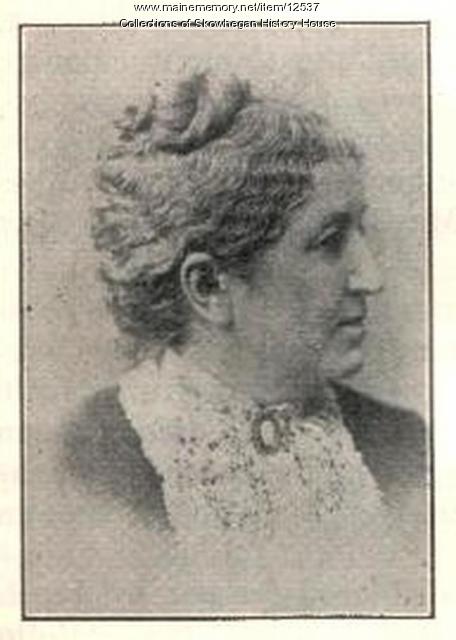Keywords: Names
Item 100311
K.B. Sewall to daughter on names, education, Mobile, 1856
Contributed by: Maine Historical Society Date: 1856-02-10 Location: Portland; Mobile Media: Ink on paper
Item 6242
Pere Pole deposition, Hallowell, 1793
Contributed by: Maine Historical Society Date: 1793-07-19 Location: Hallowell Media: Ink on paper
Item 32344
55 Alder Street, Portland, 1924
Owner in 1924: Zafiris Vamvakias et als Style: Utilitarian Use: Mill - Cabinet Works
Item 36816
88-90 Chestnut Street, Portland, 1924
Owner in 1924: Babaros Gulasorian Use: Dwelling & Store
Item 151213
Titus-Fagan residence, Woodstock, New York, 1996
Contributed by: Maine Historical Society Date: 1996 Location: Woodstock Client: Libby Titus-Fagan Architect: Landscape Design Associates
Item 151769
Mt. Sinai Cemetery Association, Portland, 1969
Contributed by: Maine Historical Society Date: 1969 Location: Portland Client: Mt. Sinai Cemetery Association Architect: H.I. & E.C. Jordan, surveyors
Exhibit
Maine Politicians, National Leaders
From the early days of Maine statehood to the present, countless Maine politicians have made names for themselves on the national stage.
Exhibit
South Portland's Wartime Shipbuilding
Two shipyards in South Portland, built quickly in 1941 to construct cargo ships for the British and Americans, produced nearly 270 ships in two and a half years. Many of those vessels bore the names of notable Mainers.
Site Page
Architecture & Landscape database - Database Collections
"Collection names are styled after the firm's proper name, or as they appear in the contributing repository's catalogue."
Site Page
Historic Hallowell - Martha Ballard's Modern Connection
"His name is Spencer Buck. He was interviewed by fellow classmate _____________ about his famous relative. Click here to listen to the conversation."
Story
Ted Truman (Throumoulos): A treasure trove of stories
by Biddeford Cultural & Heritage Center
A son of Greek immigrants’ insight into his entrepreneurial family, culture and life experiences
Story
Elizabeth Mantis Spiliopoulos: passion for life & Greek heritage
by Biddeford Cultural & Heritage Center
A spunky 99-year-old shares her crystal-clear recollections of all the changes in her lifetime
Lesson Plan
Why is Maine the Pine Tree State?
Grade Level: K-2
Content Area: Social Studies
This lesson plan will give students in early elementary grades a foundation for identifying the recognizable animals and natural resources of Maine. In this lesson, students will learn about and identify animals and plants significant to the state, and will identify what types of environments are best suited to different types of plant and animal life. Students will have the opportunity to put their own community wildlife into a large-scale perspective.
Lesson Plan
Wabanaki Studies: Stewarding Natural Resources
Grade Level: 3-5
Content Area: Science & Engineering, Social Studies
This lesson plan will introduce elementary-grade students to the concepts and importance of Traditional Ecological Knowledge (TEK) and Indigenous Knowledge (IK), taught and understood through oral history to generations of Wabanaki people. Students will engage in discussions about how humans can be stewards of the local ecosystem, and how non-Native Maine citizens can listen to, learn from, and amplify the voices of Wabanaki neighbors to assist in the future of a sustainable environment. Students will learn about Wabanaki artists, teachers, and leaders from the past and present to help contextualize the concepts and ideas in this lesson, and learn about how Wabanaki youth are carrying tradition forward into the future.






















